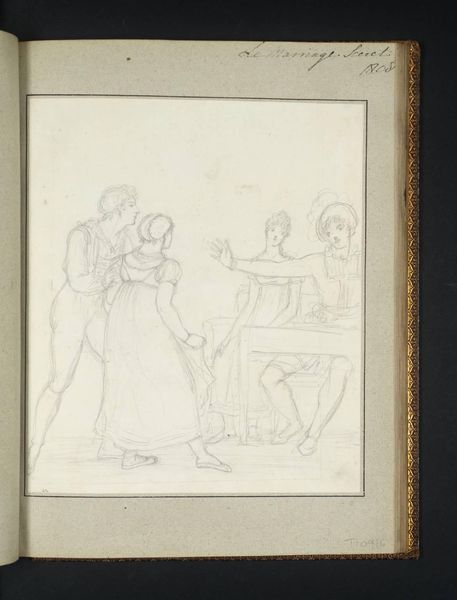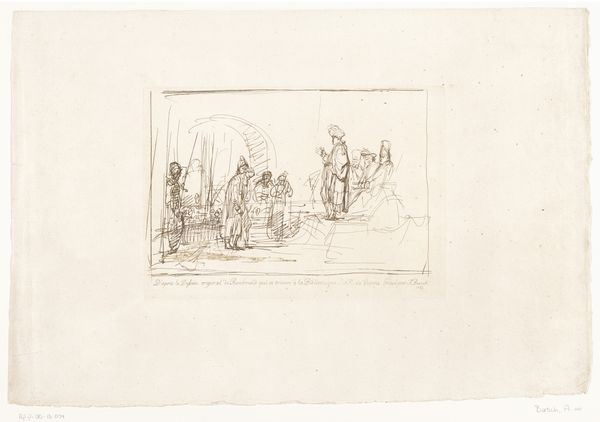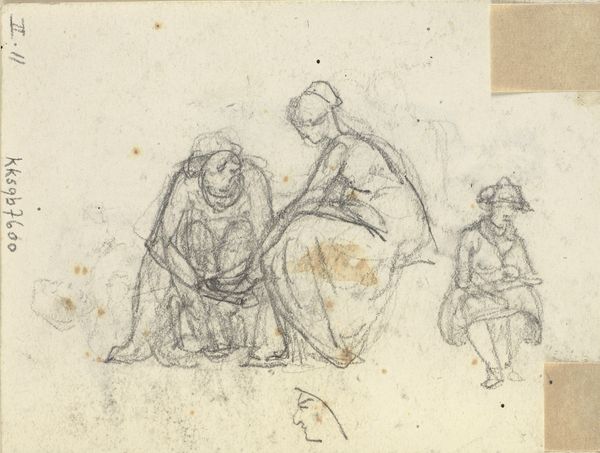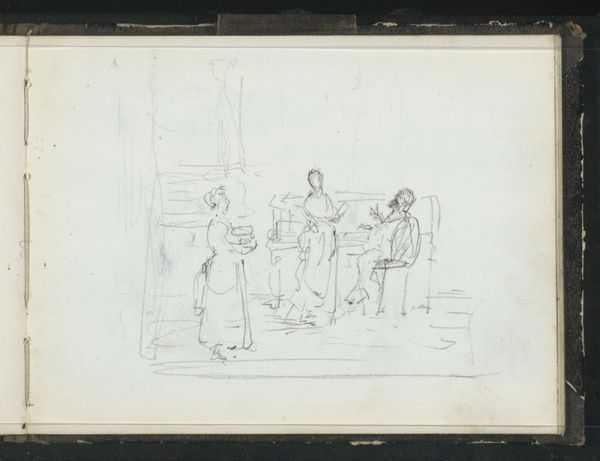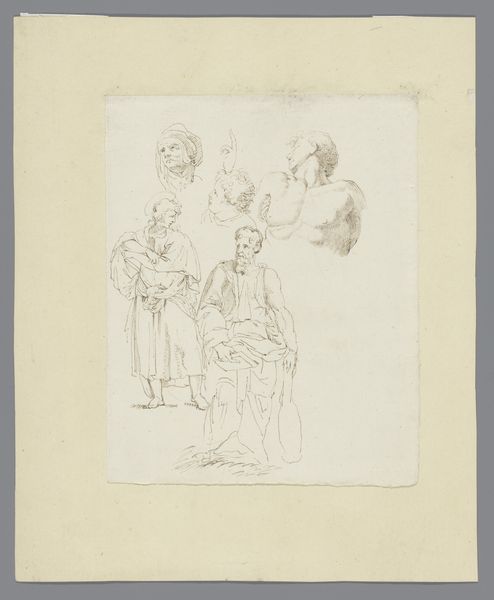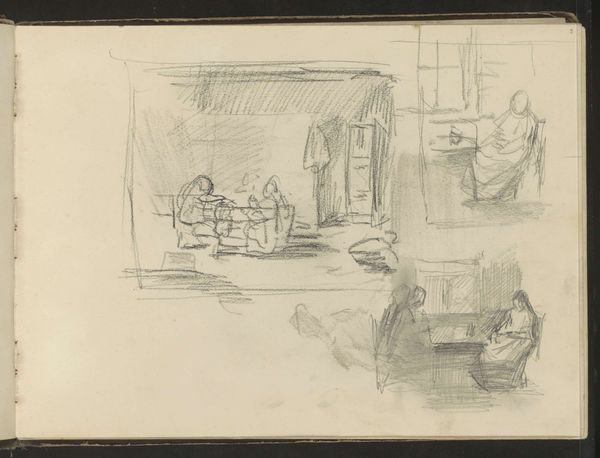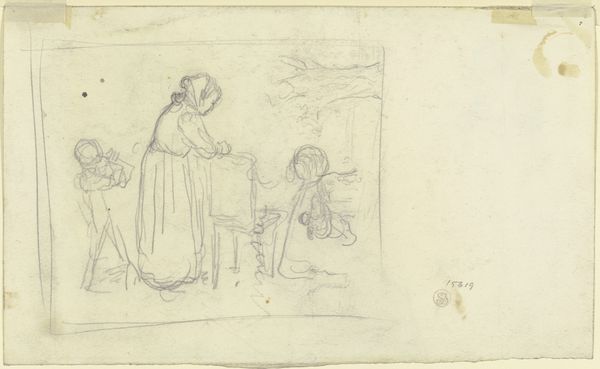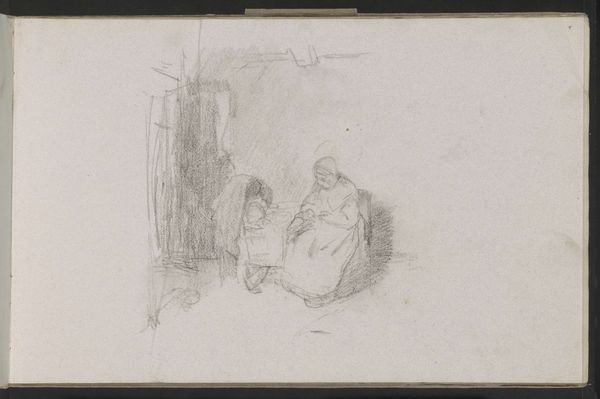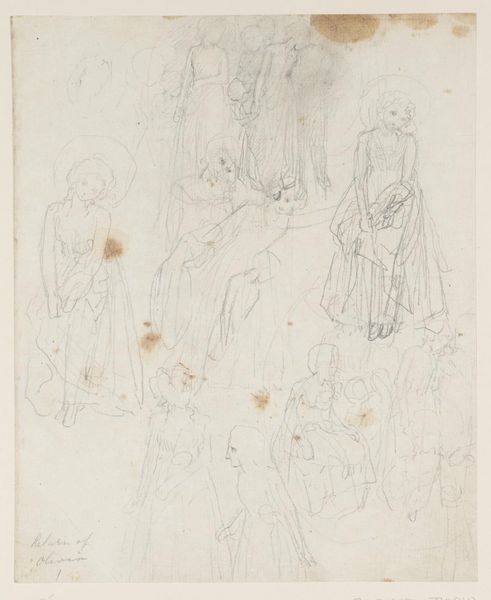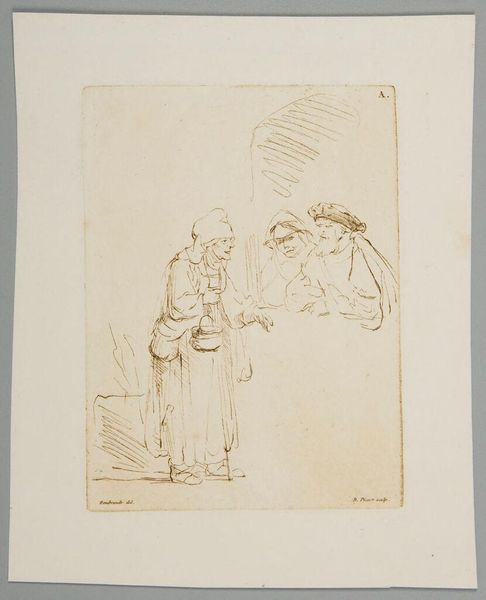
Udkast til raderingen"Kristus helbreder en lam", 1881 1790 - 1890
0:00
0:00
drawing, pencil
#
drawing
#
narrative-art
#
figuration
#
pencil
#
history-painting
#
academic-art
Dimensions: 128 mm (height) x 120 mm (width) (bladmaal)
Editor: This drawing by Carl Bloch, "Draft for the Etching 'Christ Heals a Lame Man,' from around 1881, gives us a glimpse into the artist's process. It is rendered with pencil and part of the collection at the SMK. I am struck by how sparse it is and its starkness evokes a sense of urgency. What can you see in this work, looking at its symbolism and cultural references? Curator: That is an astute observation. Indeed, while seemingly simple, this draft drawing is loaded with iconographic significance. Notice the outstretched hands of Christ. What does that gesture evoke for you, in terms of Christian imagery, and how do other figures respond in the scene? Editor: His raised arms could mean blessing or the performative act of healing. Some figures in the background raise their own arms while others look at the main group. Curator: Precisely! The open, raised hands are an ancient symbol, often found in early Christian art to depict divine power or benediction, a literal and figurative act of bestowing grace. The figures' reaction speaks to belief and witnessing the impossible. Also, consider the contrast between the upright figures, Christ and his followers, and the kneeling lame man. Does that visual division signify something beyond the immediate narrative? Editor: I would guess it has to do with helplessness against righteousness; disability versus healing. Perhaps it illustrates marginalisation versus acceptance, especially in a religious setting? Curator: Excellent point. Remember, Christ's ministry focused on the disenfranchised: the sick, the poor, the outcasts. This drawing, in its raw, preliminary state, serves as a potent reminder of this central tenet and its resonance through cultural history. And the use of line emphasises the stark contrasts. Editor: This has shed new light on the artwork’s ability to depict those contrasts, even within its seemingly unfinished status. Curator: Indeed, artistic renderings are powerful because of that embedded symbolism and its continuous interpretations by new generations of audiences.
Comments
No comments
Be the first to comment and join the conversation on the ultimate creative platform.
